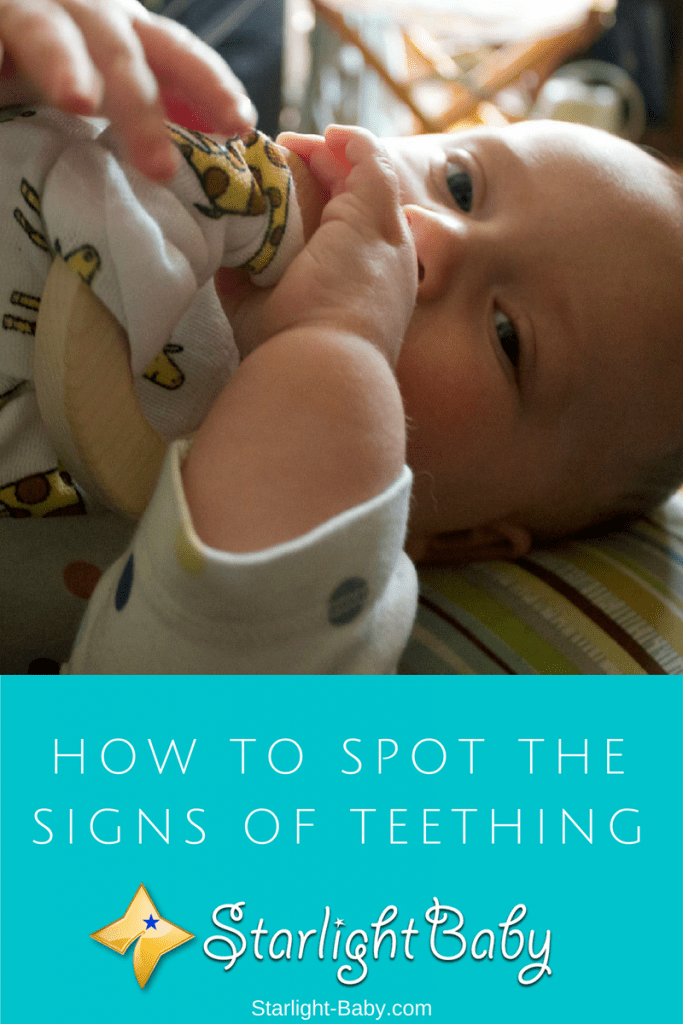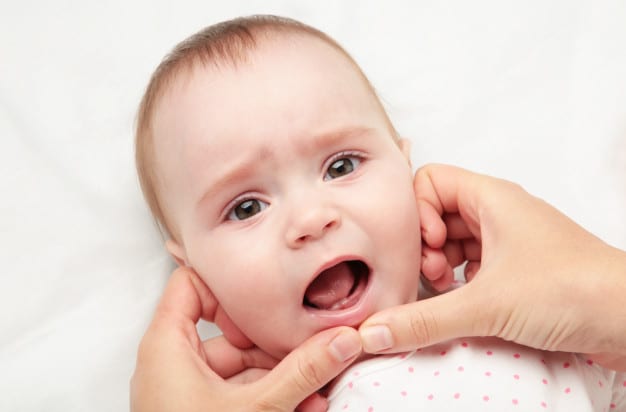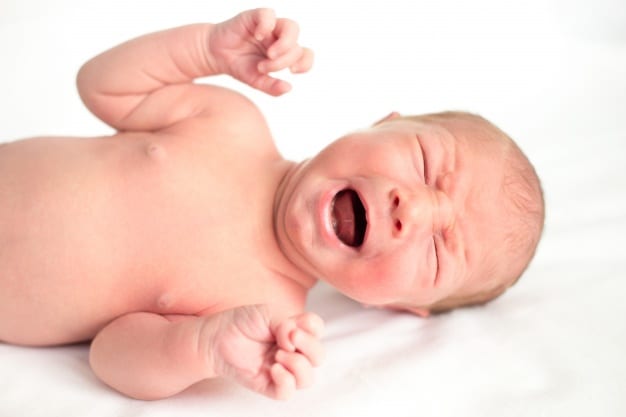 Teething is one milestone all parents dread. It can be really difficult on both the baby and you, causing sleepless nights, irritability and many other unpleasant symptoms. However, what you may not realize is that all babies go through teething differently. Some babies for example, show very few symptoms, while others have a really bad time with it.
Teething is one milestone all parents dread. It can be really difficult on both the baby and you, causing sleepless nights, irritability and many other unpleasant symptoms. However, what you may not realize is that all babies go through teething differently. Some babies for example, show very few symptoms, while others have a really bad time with it.
So, how can you spot the signs of teething if all babies are different? Luckily there are quite a few tell-tale symptoms you can look out for. Before we jump straight to the symptoms, it’s useful to know when to expect the teething stage to begin.
When Does Teething Begin?
 Again, all babies are different so the exact age they will start teething is difficult to pinpoint. It isn’t uncommon for the symptoms associated with teething to develop as early as two-three months prior to the first tooth appearing.
Again, all babies are different so the exact age they will start teething is difficult to pinpoint. It isn’t uncommon for the symptoms associated with teething to develop as early as two-three months prior to the first tooth appearing.
Some babies develop their very first tooth at two months of age, while others may not get their first tooth until they are one-year-old. So this does make it difficult to determine when your little one will start teething. That’s why it’s so important to know what signs to look out for.
The first teeth to appear are usually the two front teeth at the bottom of the mouth. The two at the top are typically the next to arrive. From thereon in, the teeth tend to go in an outwards order, towards the back of the mouth.
Signs And Symptoms To Watch Out For
There are quite a few different symptoms to watch out for and remember, your baby may only display one or two of them….
Drooling – You might assume that excessive crying due to the pain of teething would be the most common symptom, but it’s actually drooling you’ll want to watch out for. Some babies feel no pain at all, but drooling becomes much more noticeable.
The reason babies drool a lot more during teething is actually pretty cool. Firstly, it helps to soothe the gums. However, more importantly, it contains antibodies which protect the gums against germs. This is especially useful when it comes to the next symptom…
Putting anything and everything in their mouth – Another major sign your little one is moving into the teething phase is they’ll want to put everything in their mouth. Sucking on things really soothes the gums, so your baby will instinctively go to suck on anything they can. Of course, they have no idea that it’s not hygienic to suck on things like a pet’s chew toy for example. So, those antibodies to protect the gums against germs go a long way to ease your mind!
A rash around the mouth and chin– The additional drool created during teething can cause what is commonly referred to as a “teething rash”. It can cause the skin around the mouth and chin to become chapped or a little rash could develop. This may even extend down towards the neck.
Making sure you wipe away any drool quickly, as well as using some form of moisture barrier such as Aquaphor or Vaseline, will help to minimize this problem.
You can see the tooth poking through – Of course, one of the most obvious signs of teething is if you can actually see a tooth. Now, due to how small baby’s teeth actually are, it may be quite difficult to see at first. You can test to see if any teeth are starting to come through by feeling around the gum. If you feel a small ridge, then this is a sure sign there’s a tooth hiding just under the surface.
Biting – Once the teeth do start to push through, your baby will develop an urge to bite. The new teeth can put pressure onto the gums which is quite uncomfortable for your little one. When they bite down, it relieves the pressure and therefore eases that discomfort. This is something you’ll definitely start to notice if you’re breastfeeding (ouch!).
Redness – You’ll typically find your baby’s gums become red and swollen during teething. However, the redness can also extend to the cheeks. So, if you notice their little cheeks are starting to appear a little more flushed than usual, it could be a sign of teething.
Crying and irritability – Babies can become distressed during teething due to the discomfort and pain. This will lead to prolonged bouts of crying and you may find them to be more irritable than usual. This often includes trouble at night time, where they will likely wake up more frequently.
These are the main symptoms to look out for. However, it’s worth keeping in mind that the signs of teething can also be symptoms of something else.
Is Your Baby Generally Unwell?
 It’s really important to rule out illness before considering whether your little one is teething. As a general rule, teething will not cause your baby to feel unwell. This includes vomiting, diarrhea and a fever. So, if your little one has any of those symptoms it’s best to get them checked out by a doctor.
It’s really important to rule out illness before considering whether your little one is teething. As a general rule, teething will not cause your baby to feel unwell. This includes vomiting, diarrhea and a fever. So, if your little one has any of those symptoms it’s best to get them checked out by a doctor.
Some parents do notice a change in their baby’s poop during this time, but it’s still worth having it properly looked at by an expert to be sure. If it is teething, your doctor will also be able to give you advice on how to treat it and help minimize your baby’s discomfort.
Conclusion
Overall, teething is something which all babies go through, but the signs, symptoms and age at which it starts differs significantly between children. So, it’s best to use the above as a guideline. Always seek a professional diagnosis as when it comes to your baby’s health, it’s always better to be safe.
I didn’t know about the teething rash. My third child had some rashes on his face, and I was not sure what they were, as they just went off quickly. I suppose they might be teething rashes. My two elder children had their first tooth before they were 6 months old, but my third child’s only popped out when he was 11 months old. It looks like he has been going through the teething process for months, and it was not easy for both of us too, I am glad he finally got his first tooth and able to sleep slightly better at night now.
All the points are true and are very easy to check. the first symptom is crying and the fever. When this doesn’t happen we can look for all the other signs as rash, biting and putting anything in their mouth.
It is much easier for the parents who are at their second baby to notice faster these signs!